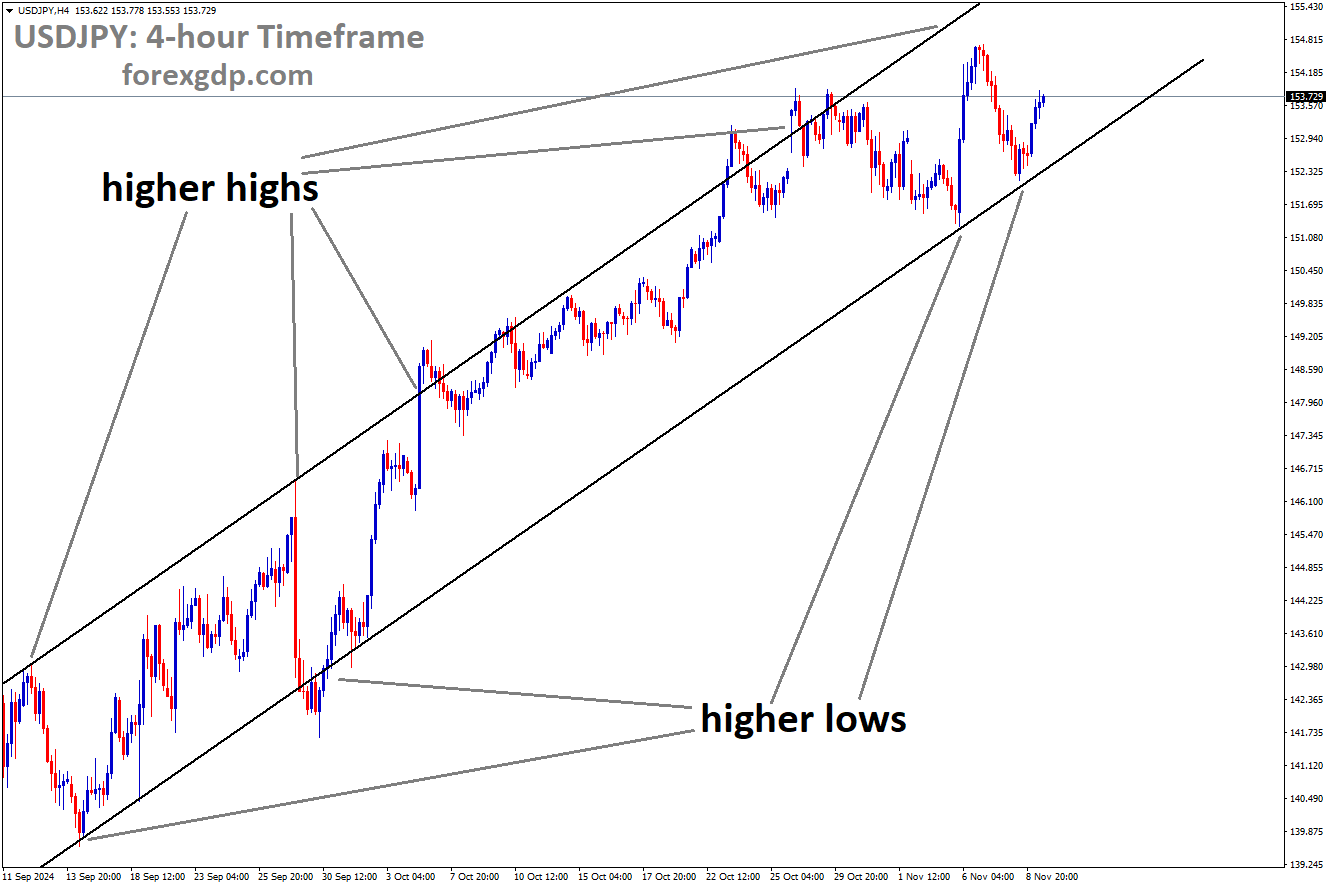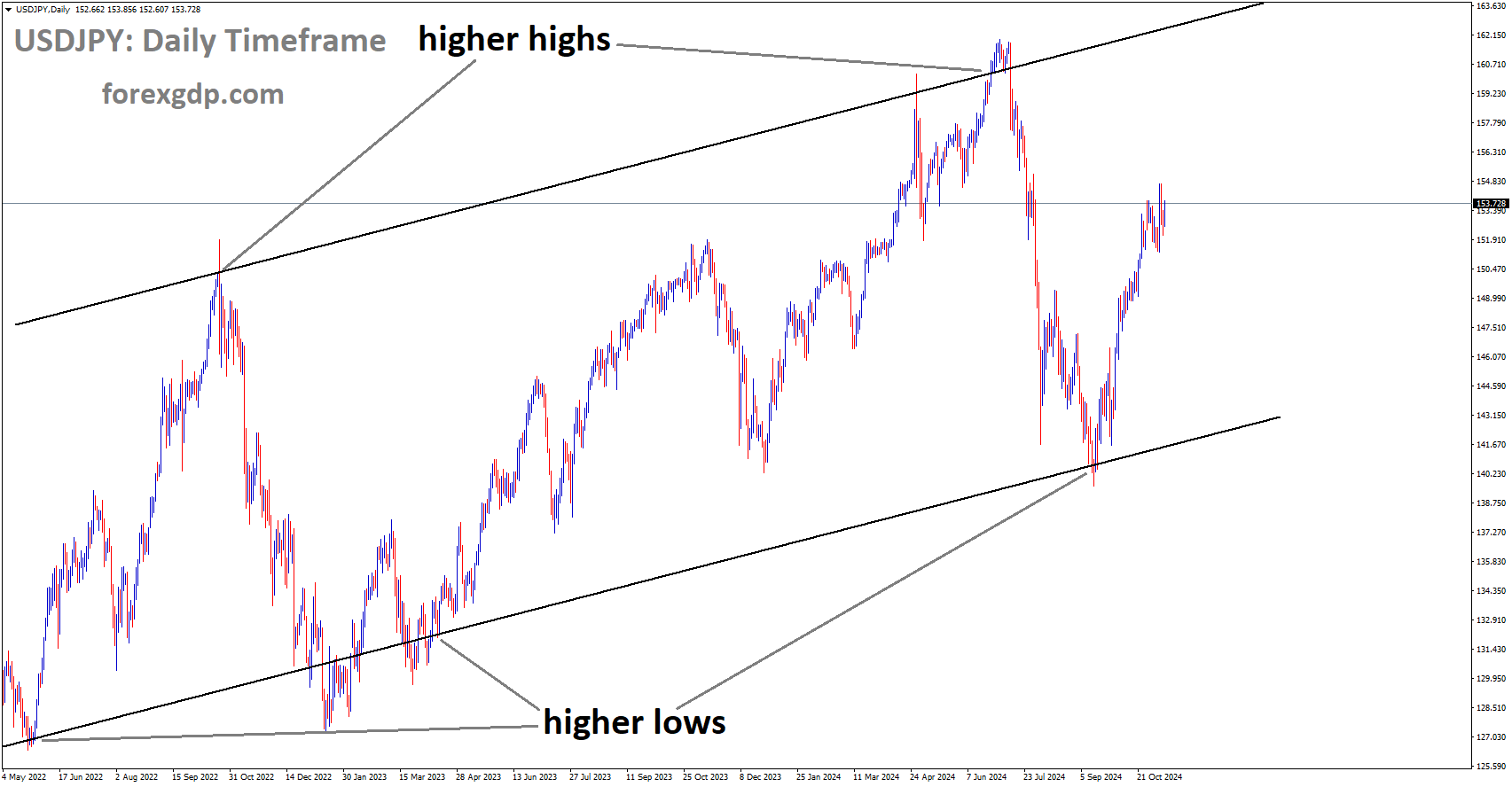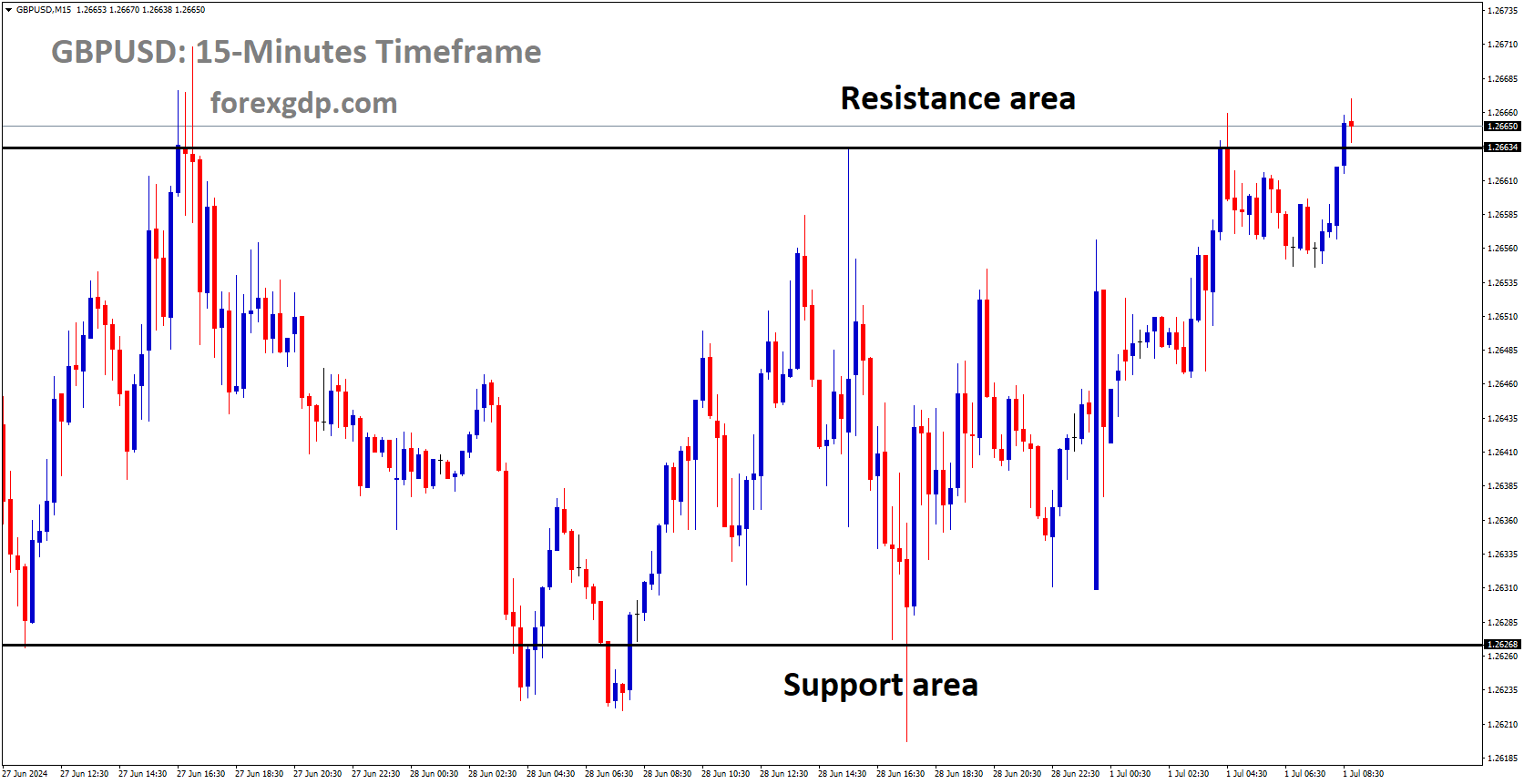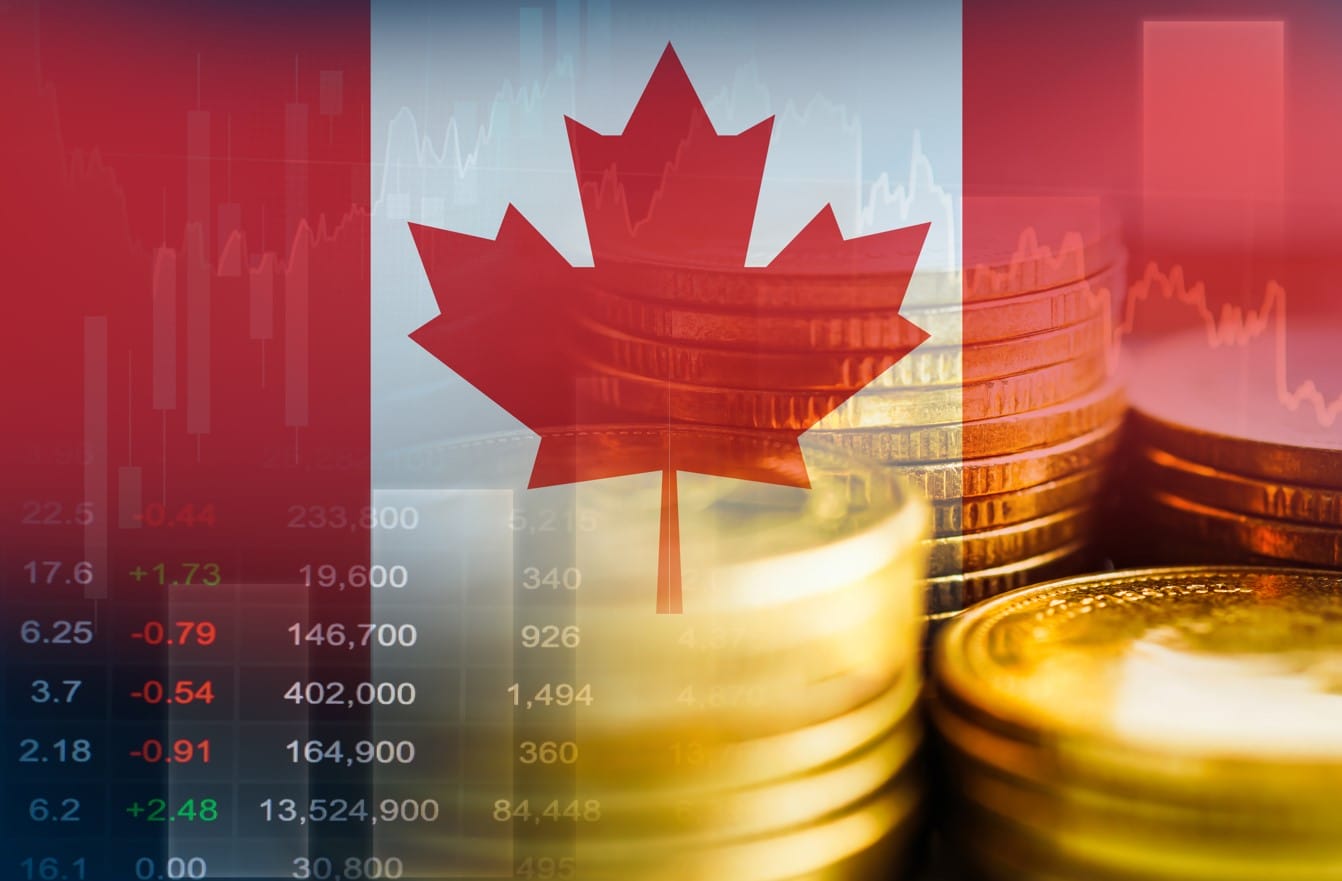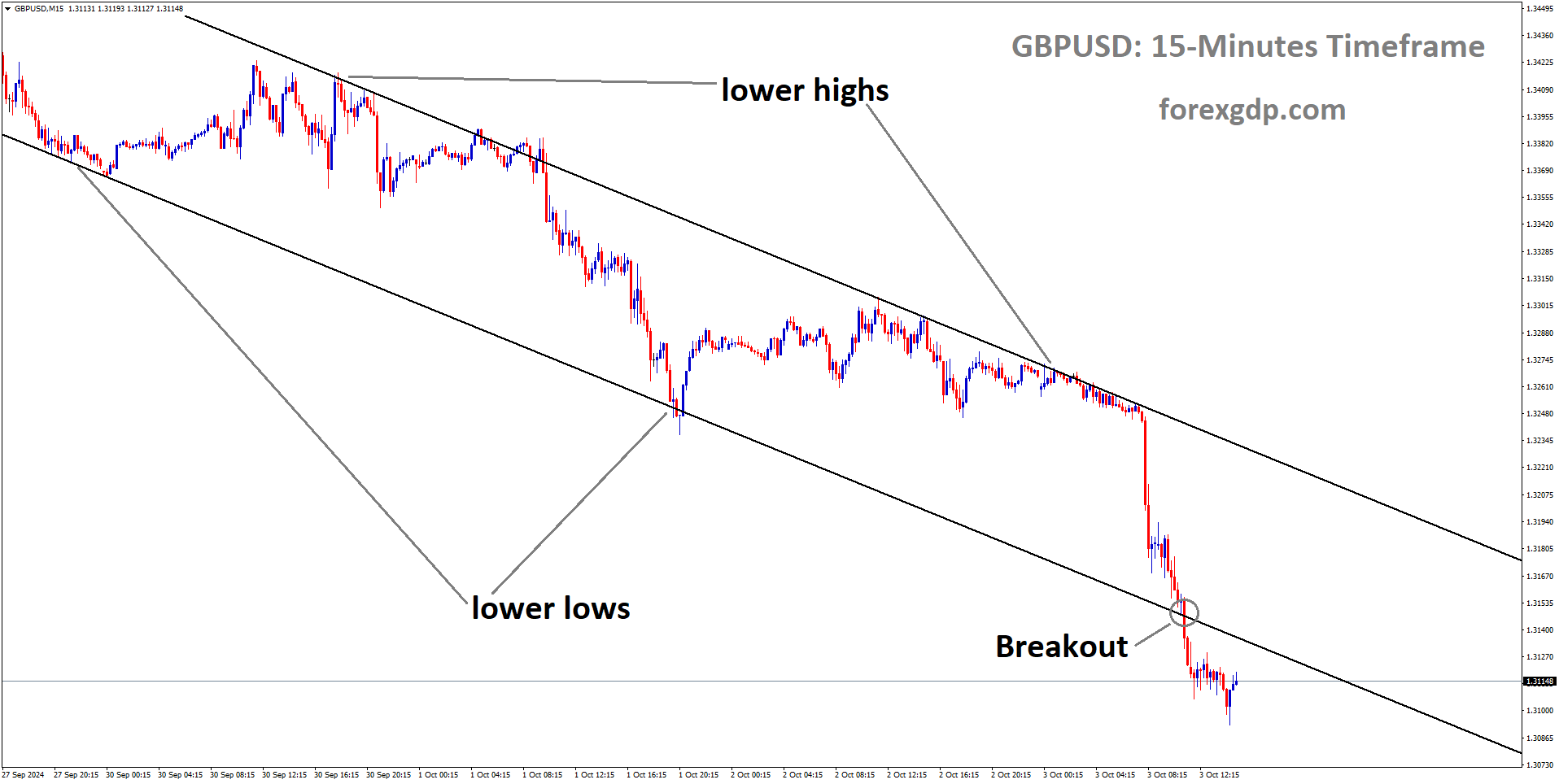USDJPY is moving in an uptrend channel, and the market has rebounded from the higher low area of the channel
#USDJPY Analysis Video
USD/JPY Rises as Uncertainty Looms Over Japan’s Economic Future
The USD/JPY exchange rate has recently surged past the 153.50 mark, capturing the attention of traders and investors alike. This rise reflects a confluence of economic and political factors that are stirring up uncertainty in Japan. With a weakened Japanese Yen and doubts about Japan’s economic policies, particularly regarding future interest rate adjustments, there’s plenty to unpack here. From Japan’s struggling economy to global political influences, let’s dive into what’s really behind the upward trend in USD/JPY.
Japan’s Economic Woes and Weak Growth Outlook
For Japan, the economic forecast has been cloudy. A struggling economy, a new political landscape, and the Bank of Japan’s hesitance to make immediate policy adjustments all contribute to an uncertain outlook. Here are some factors currently impacting Japan’s growth:
- Low Domestic Demand and Stagnation
Japan’s economy has long faced issues of low domestic demand, stagnant wage growth, and an aging population. These factors make it challenging for the country to stimulate growth from within. As a result, Japan often depends on its export sector and international trade to fuel its economy. With these internal challenges, the country’s growth remains limited, especially without strong government action to improve domestic economic conditions. - Government Policy Limitations
Political factors have further added to the uncertainty. The recent re-election of Liberal Democratic Party (LDP) leader Shigeru Ishiba as Japan’s Prime Minister didn’t come with the desired outcome for the ruling party. The LDP lost its majority in the lower house, meaning Ishiba must now lead with a minority government. A government without a strong majority may struggle to pass essential reforms or provide the financial stimulus the Japanese economy so desperately needs. - Interest Rate Policies by the Bank of Japan
The Bank of Japan (BoJ) has been cautious in tightening its monetary policy. Its reluctance is partially due to concerns over Japan’s fragile economy. The central bank’s Summary of Opinions (SOP) report from October revealed a split among officials over whether to hike interest rates soon or wait for more economic stability. This indecisiveness underscores the BoJ’s complex position—balancing between boosting growth and managing inflation while avoiding rapid shifts that could harm the economy.
Global Influence on Japan’s Economy: Trump’s Impact and Trade Worries
Japan’s economic situation isn’t only influenced by domestic factors. The global stage, particularly the United States, plays a huge role in determining Japan’s economic health. Recent developments in U.S. politics, especially the presidential victory of Donald Trump, have introduced new challenges for Japan.
- Trump’s Trade Policies and Tariffs
Japan is one of the United States’ primary trading partners, and shifts in U.S. policies can significantly affect Japan’s economy. Trump’s win has come with promises to implement protectionist trade policies, including raising tariffs on imported goods by 10%. These policies could directly impact Japan’s export sector. Given Japan’s reliance on exports to sustain its economy, Trump’s trade plans could put a strain on Japan’s key industries, such as electronics, automobiles, and machinery. - Stronger U.S. Dollar Impact on Trade
With Trump’s presidency, the U.S. Dollar has remained relatively strong. This strength reflects investor confidence in the U.S. economy, but it also places added pressure on other currencies, including the Yen. A stronger dollar typically makes Japanese exports more expensive in the U.S. market, potentially reducing demand for Japanese goods. If Japanese companies experience decreased export revenue, it could weigh heavily on the broader economy. - Impact on the USD/JPY Exchange Rate
Due to these trade uncertainties and policy shifts, the USD/JPY exchange rate has shown an upward trend, with the dollar strengthening against the yen. Investors seem to be leaning towards the U.S. Dollar as a safe-haven currency, especially with the uncertainty surrounding Japan’s political landscape and economic outlook.
USDJPY is moving in an Ascending channel, and the market has rebounded from the higher low area of the channel
Key Economic Events to Watch: U.S. CPI Data and BoJ Policies
Amidst this backdrop, upcoming economic reports and policy decisions are likely to influence the USD/JPY further. Here’s a look at what traders and investors should keep an eye on.
- U.S. Consumer Price Index (CPI) Release
The U.S. CPI, a critical indicator of inflation, is scheduled for release on Wednesday, and it’s bound to impact market sentiment. The CPI data provides insights into the cost of goods and services in the United States, giving clues about inflationary trends. If inflation appears to be rising, it could increase the likelihood of the Federal Reserve adjusting interest rates, further boosting the USD.Economists anticipate that the annual inflation rate for October may have accelerated to 2.6% from 2.4% in September, with core inflation steady at 3.3%. A higher-than-expected CPI reading could prompt further strengthening of the USD, possibly pushing the USD/JPY pair even higher. For Japan, this could mean additional challenges in maintaining economic balance amid a weakening Yen. - Bank of Japan’s Future Policy Directions
Investors are also watching the Bank of Japan closely, as its next moves will have significant implications for the Yen. The BoJ’s ongoing indecision about rate hikes, highlighted in the October SOP report, suggests that the central bank is navigating a challenging path. A quick policy shift could potentially shock the markets, but maintaining the status quo also comes with risks, as inflationary pressures could rise if the Yen continues to weaken.Any concrete actions or statements from the BoJ that clarify its stance on interest rates could provide the Yen with some much-needed support or, conversely, fuel its continued weakening if the BoJ stays cautious.
Final Takeaway: Navigating USD/JPY Amid Uncertainty
In the current climate, the USD/JPY exchange rate reflects both Japan’s internal economic struggles and the impact of global influences. Japan’s outlook remains fragile, with the nation facing low domestic demand, a weakened export sector, and a political landscape that limits effective governance. The Bank of Japan’s hesitance to tighten policy further complicates the situation, leaving the Yen vulnerable to market forces.
Simultaneously, the United States, under Trump’s presidency, appears determined to prioritize its own economy through protectionist policies, potentially limiting Japan’s access to the U.S. market. The strength of the USD, bolstered by investor confidence and favorable economic conditions, could continue to pressure the Yen unless Japan takes decisive actions.
For investors and traders, the USD/JPY pair serves as a reflection of broader economic trends and uncertainties. As key events unfold, from CPI reports in the U.S. to BoJ policy decisions, keeping an eye on these dynamics can help guide trading decisions and provide insights into the ever-changing landscape of global markets. In the end, while the future may seem uncertain, staying informed and agile can be the best strategy in navigating this intricate economic environment.
Don’t trade all the time, trade forex only at the confirmed trade setups
Get more confirmed trade signals at premium or supreme – Click here to get more signals, 2200%, 800% growth in Real Live USD trading account of our users – click here to see , or If you want to get FREE Trial signals, You can Join FREE Signals Now!

